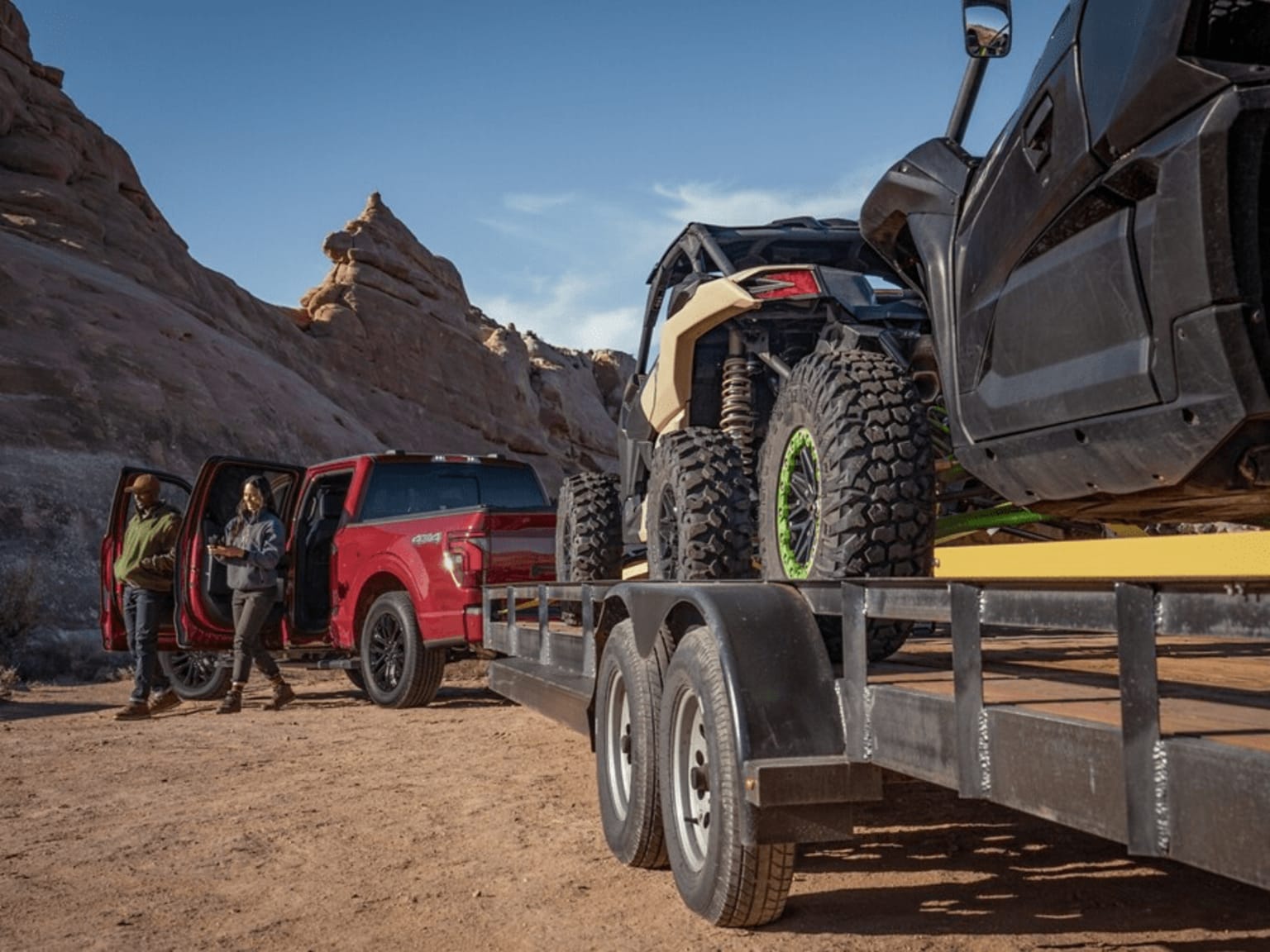
Ford Super Duty Towing Capacity: Weight Distribution, Sway, and Mirror Options
Built to Pull: The 2025 Ford Super Duty Towing Capacity Playbook
When you buy a Super Duty, you’re not just buying a truck, you’re buying a system built to pull. This guide breaks down Ford Super Duty towing capacity, how to calculate your truck’s exact limits, and the practical setup details (weight distribution, sway control, and mirrors) that turn a heavy trailer into a confident, predictable tow.
Whether you’re shopping for F-350, F-450, Ford Super Duty F-250 towing capacity, or beyond, here’s how to tow smart, safe, and stress-free.
The Building Blocks of Ford Super Duty Towing Capacity
No two Super Duty builds tow exactly the same. Your Ford Super Duty towing capacity depends on:
Engine & transmission (gas vs. Power Stroke® diesel)
Axle ratio (higher numerically often = more pull)
Drivetrain (4×2 vs. 4×4), cab, and bed length
Suspension & tow package (hitch class, cooling, wiring, integrated brake controller)
Hitch type (conventional vs. fifth-wheel vs. gooseneck)
Wheels/tires and payload (what the truck can carry on its axles)
Pro tip: Your true 2025 Ford Super Duty towing capacity lives on its door-jamb labels and in the owner’s info: GVWR, GAWR (front/rear), and GCWR. Never exceed these, even if a brochure shows “up to” numbers.
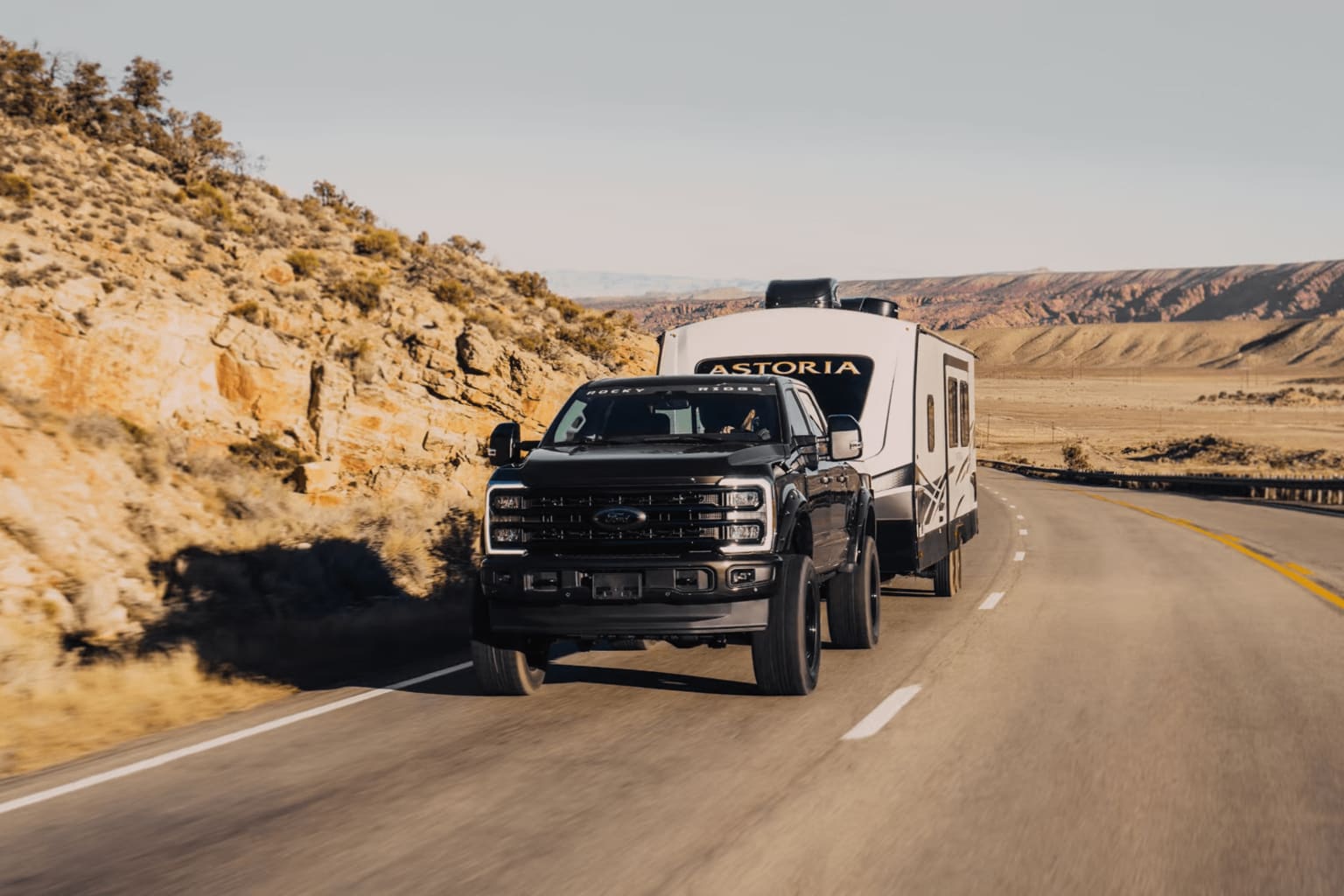
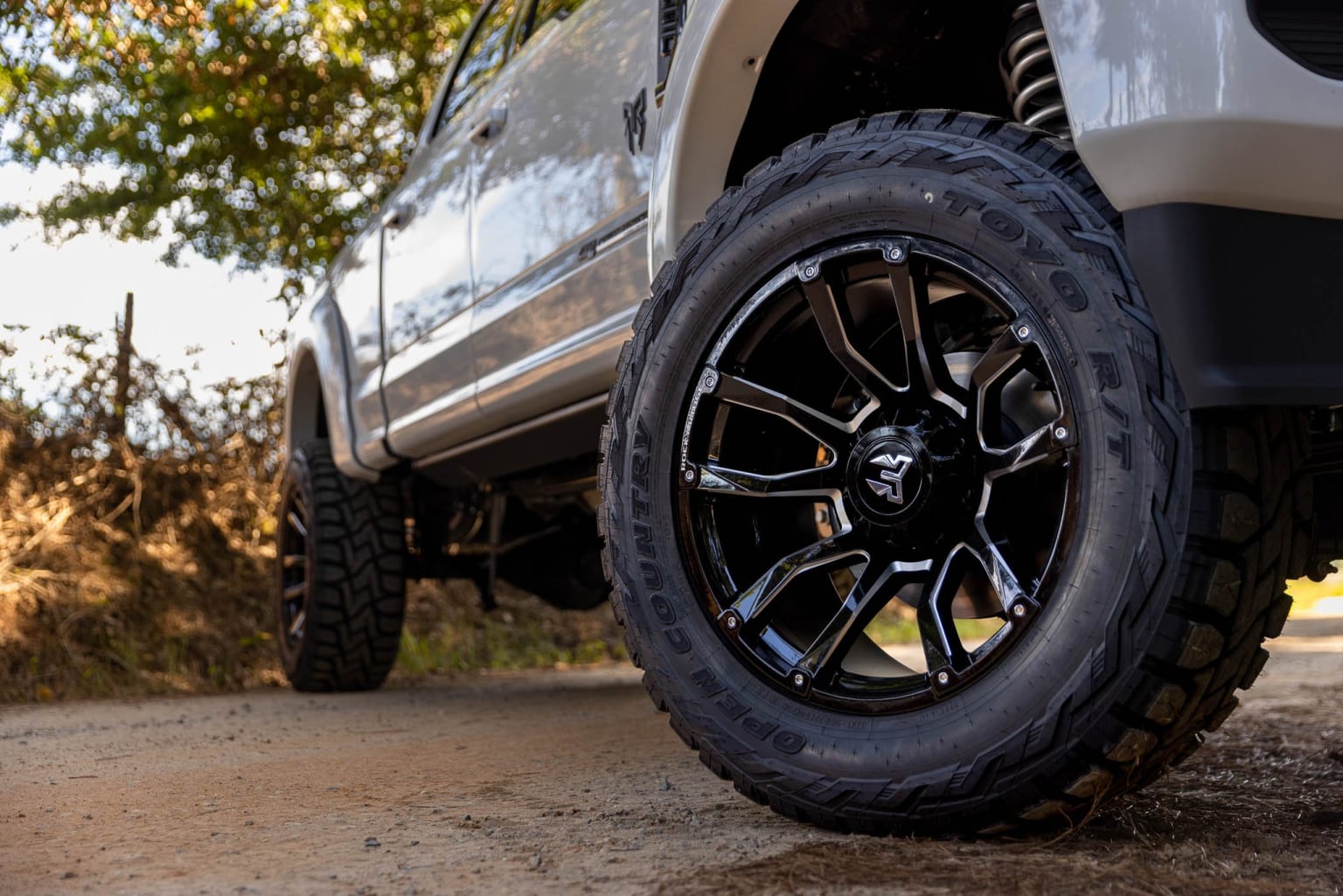
Getting Specific: F-250, F-350, F-450
If you’re researching the Ford Super Duty F-250 towing capacity, you’ll see a wide range based on spec. Gas F-250s with a standard axle ratio and short bed will tow differently than a diesel long-bed with a 3.55/3.73 axle and the right tow hardware. The same is true climbing to F-350 and F-450: payload, axle, and hitch type shift the ceiling.
Overall 2025 Ford Super Duty towing capacity follows the same logic: Ford optimizes ratings by configuration rather than one blanket number. That’s why two trucks that look similar on the lot can have different maxes. If you’re on the bubble between a F-350 and the Ford Super Duty F-250’s towing capacity, our team can run your trailer’s real weights against specific VINs to show exactly where you land, and whether stepping up yields practical headroom.
How to Calculate Your Real-World 2025 Ford Super Duty Towing Capacity
Find the numbers: Note your truck’s GVWR, GAWR (rear especially), and GCWR on the labels/guide.
Know the trailer’s loaded weight: Not just dry weight—include water, gear, fuel, toys.
Estimate vertical load:
Conventional: 10–15% of loaded trailer = tongue weight.
Fifth-wheel/gooseneck: 15–25% = pin weight.
Check payload: Tongue/pin weight counts against payload. Add passengers, fuel, bed cargo, and accessories. Stay within GVWR and rear GAWR.
Check GCWR: Truck’s curb weight + trailer’s loaded weight must be ≤ GCWR.
Hitch rating: Your hitch/ball must be rated for the actual load (and weight distribution if used).
Brakes: Above certain weights, your trailer must have its own brakes; pair with the truck’s integrated trailer brake controller.
Remember: If any number is exceeded, the lowest rating wins.
Weight Distribution: When (and Why) to Use It
Big power gets you moving; proper weight distribution keeps you in control.
What it is:
A weight distribution hitch (WDH) uses spring bars to transfer some tongue load to the truck’s front axle and the trailer axles. Benefits for your Ford Super Duty towing capacity routine include:
Level stance and restored front-axle steering/braking
Reduced porpoising and improved headlight aim
Often required by hitch manufacturers above certain tongue weights
When to add WDH:
Conventional trailers with heavier tongue weight (common with long travel trailers)
When the truck’s front end lifts noticeably or steering feels light
If your owner’s info or hitch specs call for it to support your Ford Super Duty F-250 towing capacity
Setup tips:
Aim for 10–15% tongue weight after loading; too light = sway, too heavy = squat.
Set bar tension on level ground, measure fender heights before/after, and adjust to bring the front within manufacturer spec.
Re-check after packing the trailer as weight shifts change the equation.
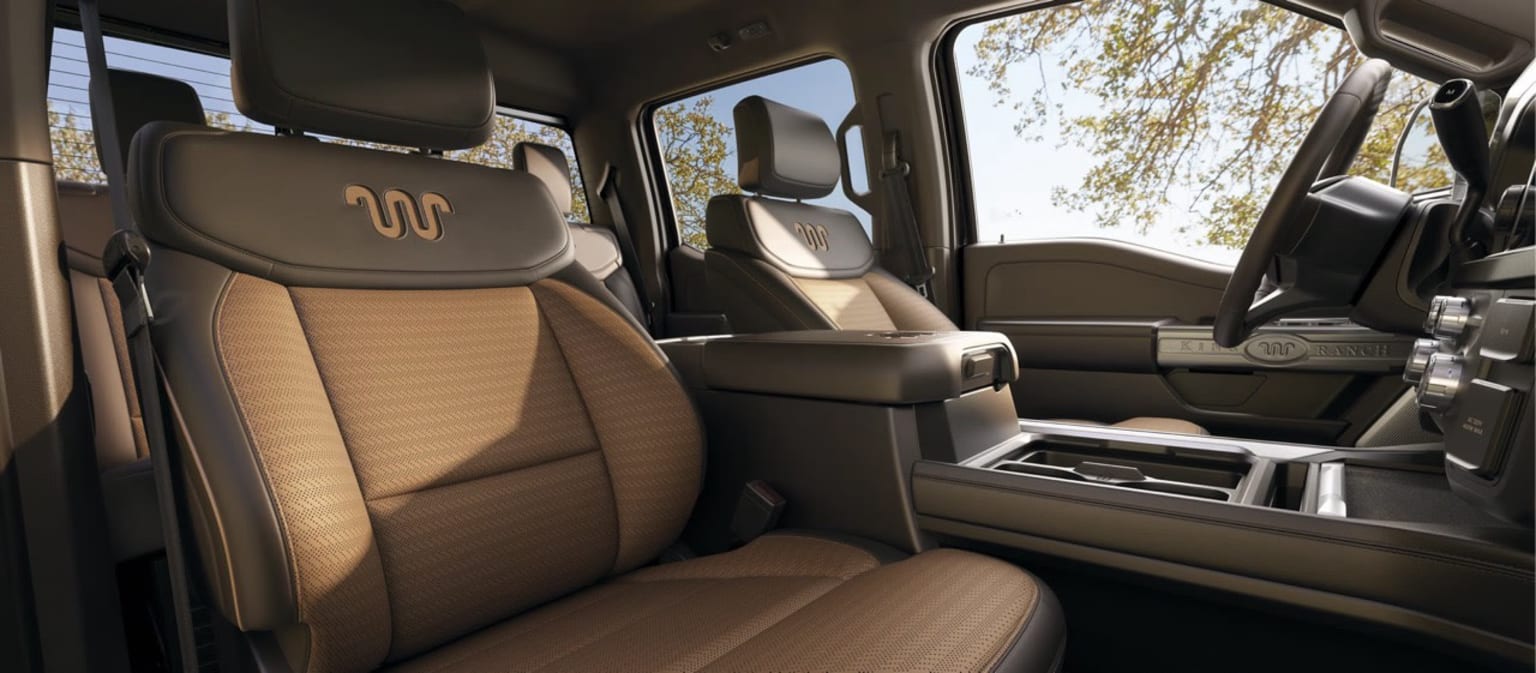
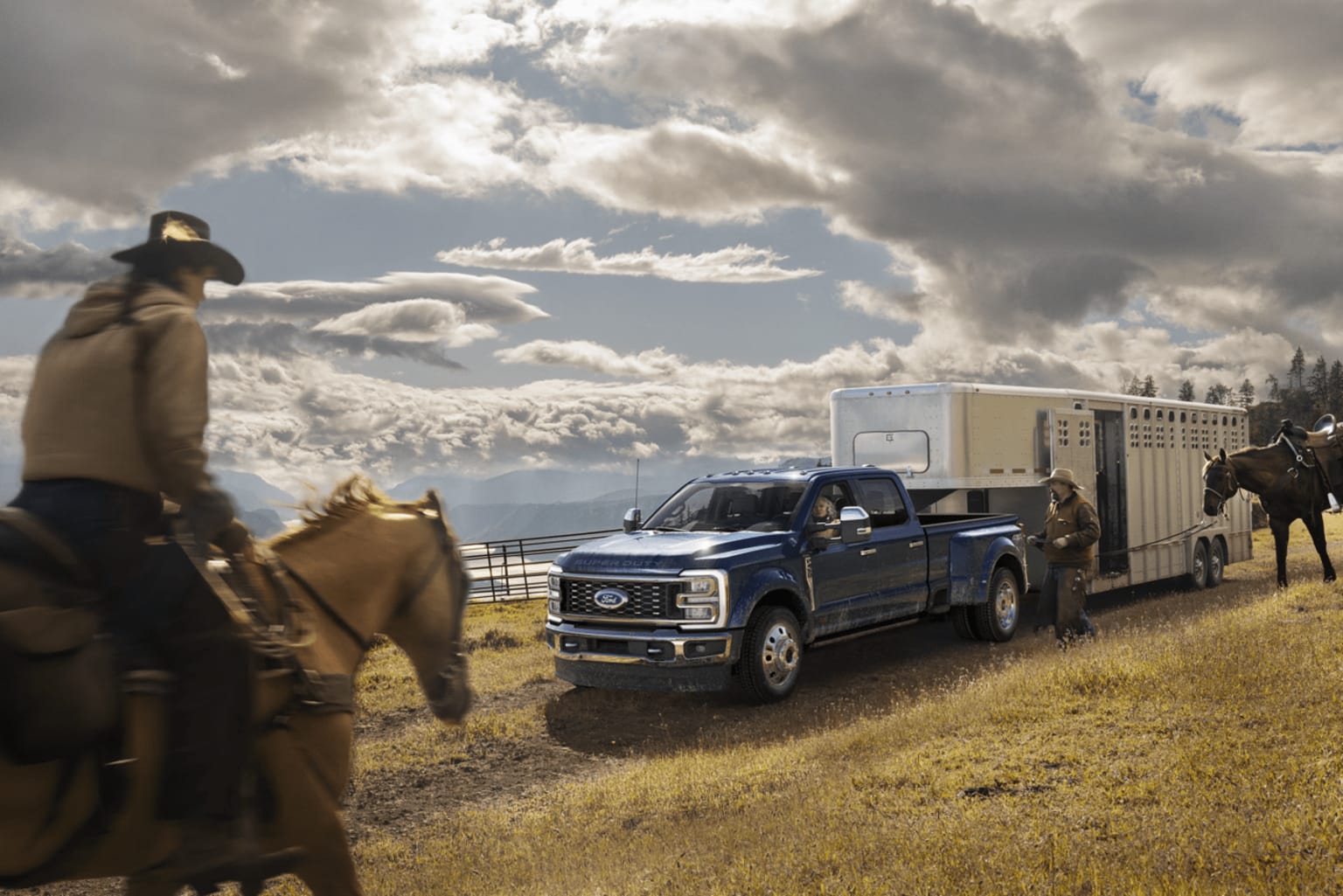
Real-World Matching: Which Super Duty for Which Trailer?
Not sure? Bring your trailer specs (real loaded weight). We’ll run the math against specific VINs so your Ford Super Duty towing capacity is correct for your use.
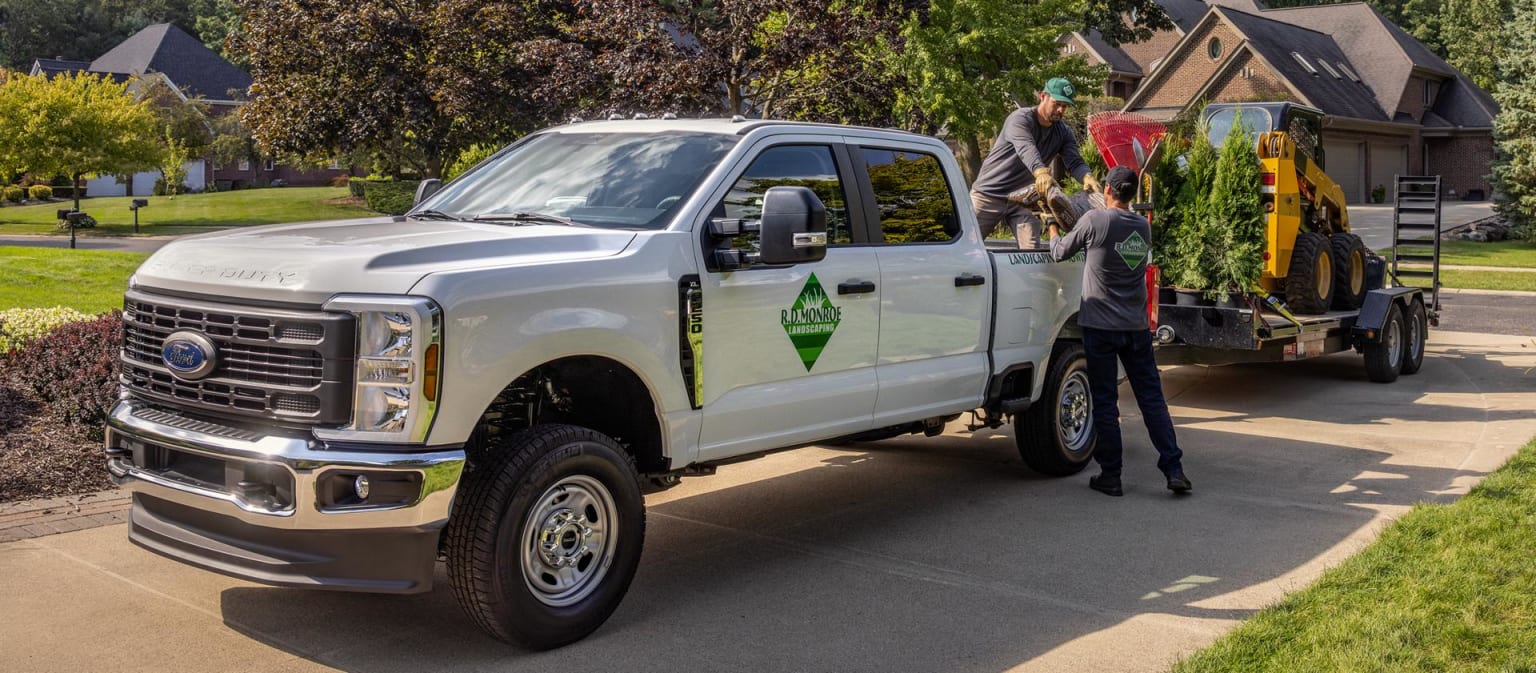
Great for boats, utility trailers, and many travel trailers when spec’d correctly.
If your numbers creep up, check an axle ratio change or step to F-350. This is where most shoppers start when asking about Ford Super Duty F-250 towing capacity.
Trailer Sway: Prevention and Control
Trailer sway starts as a small wiggle and can snowball fast with speed, wind, or poor loading. The fix begins before you hit the highway.
What causes sway?
Too little tongue weight (under ~10% on a conventional trailer)
High center of gravity, cargo too far aft, or crosswinds
Under-inflated tires on truck or trailer
Driving too fast for conditions
What your Super Duty adds
Trailer Sway Control (integrated with stability control) can detect yaw and selectively apply brakes/reduce torque to settle the rig.
BLIS® with Trailer Coverage (availability varies) helps you see into blind spots alongside the trailer.
Pro Trailer Hitch Assist, 360-degree camera, and Reverse Guidance (availability varies by trim/package) make lining up and maneuvering simpler, confidence is safety.
How to prevent it
Load heavy items low and forward; confirm tongue weight is 10–15%
Use a friction or dual-cam sway control device (many WDHs integrate this)
Keep tire pressures at spec and wheel bearings serviced to make the most of your Ford Super Duty towing capacity
Slow down; leave more following distance
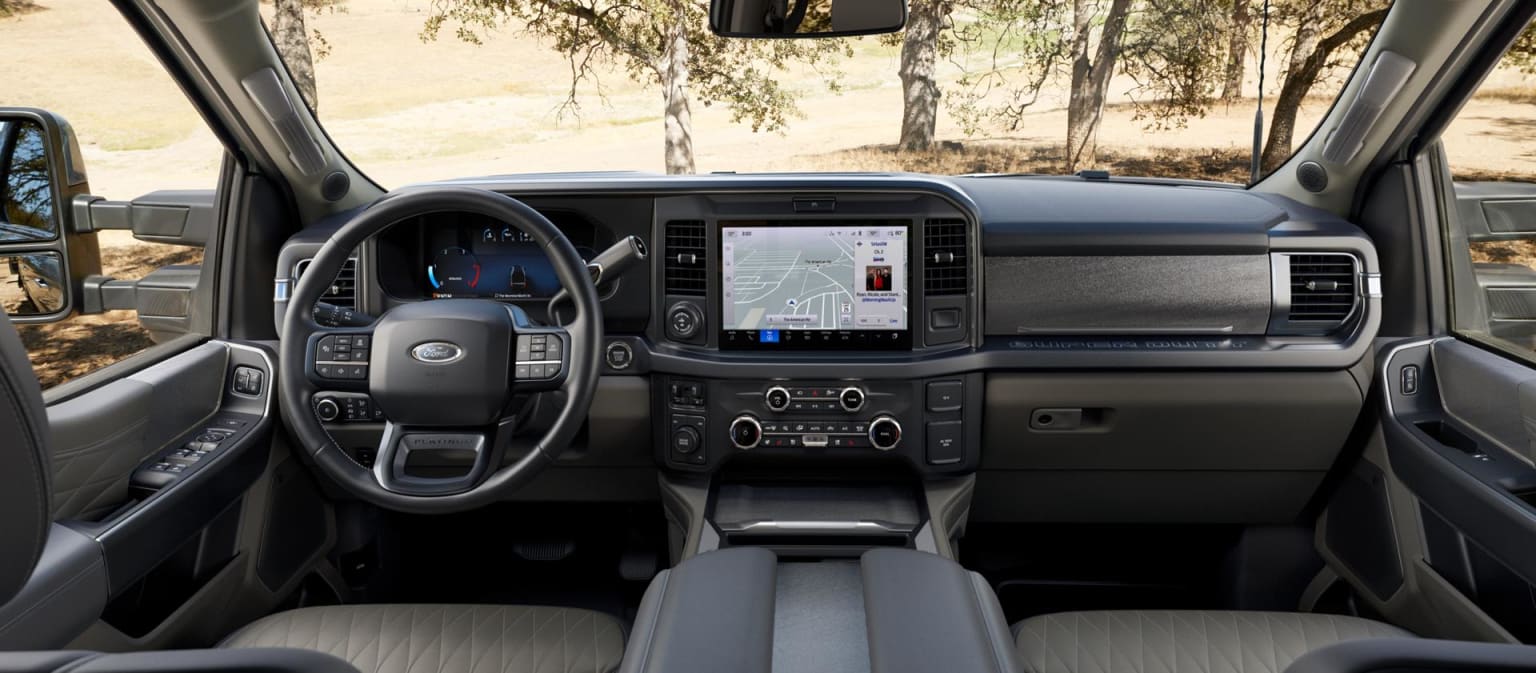
Must-Have Tow Tech & Hardware on a Super Duty
Integrated Trailer Brake Controller: Smooth, adjustable trailer-brake application from the dash.
Factory Tow Package: Correct hitch class, wiring, cooling, and rating to match the build, enhancing your existing Ford Super Duty towing capacity.
Tow/Haul Mode: Alters shift strategy for grade braking and reduced heat.
Pro Trailer Navigation (availability varies): Can help route around weight/height restrictions.
Onboard Scales/Smart Hitch (availability varies by model year): Helps estimate payload distribution and tongue weight right from the truck.
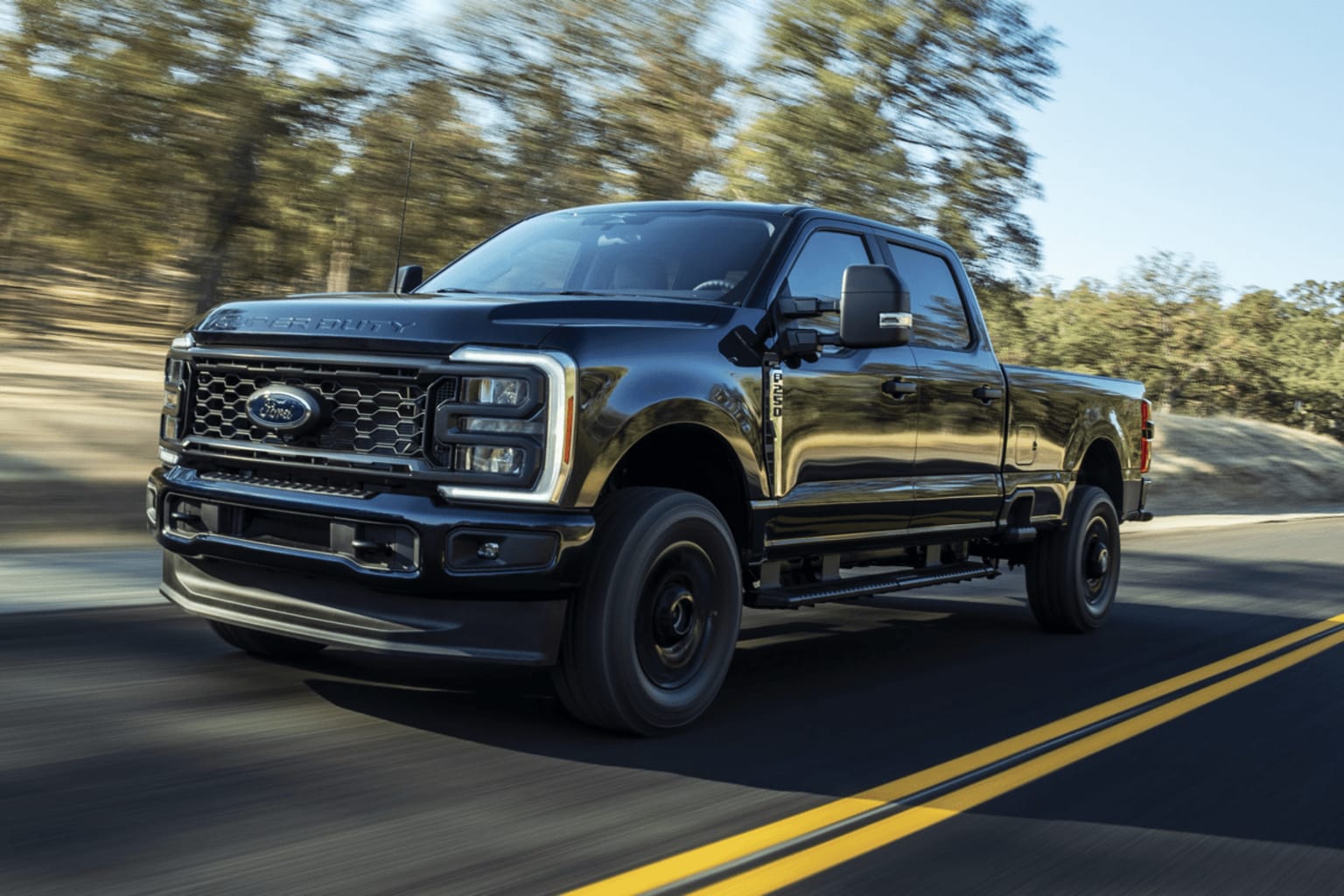
Mirror Options: See More, Work Easier
Good mirrors are non-negotiable when you’re long and wide.
Power-Telescoping Trailer Tow Mirrors
Extend outward for trailer width; power-fold for tight parking
Upper flat + lower convex glass for lane view + blind-spot sweep
LED spotlights, integrated turn signals, and puddle lamps (availability varies)
Pair with camera views for near-360 situational awareness while you enjoy your Ford Super Duty towing capacity
Mirror setup tips 🔧
Flat glass: align to just show the truck’s side and most of the adjacent lane.
Convex: angle down/out to watch trailer tires and adjacent lanes.
If legal in your area, add clip-ons or extensions when width demands it.
Conventional vs. Fifth-Wheel vs. Gooseneck
A fifth-wheel/gooseneck puts weight over the axle, improving stability and often unlocking higher maximums. A conventional hitch keeps the bed free but has lower Ford Super Duty towing capacity and demands precise tongue-weight management.
Conventional (bumper-pull):
Hitch below the bumper line. Easiest to live with day-to-day.
Tongue weight: typically 10–15% of trailer’s loaded weight.
Fifth-wheel:
Hitch mounted in the bed over/just forward of the rear axle.
Pin weight: typically 15–25% of loaded weight; very stable.
Gooseneck:
Ball in the bed; similar weight dynamics to fifth-wheel, often highest capacities.
Pin weight: generally 15–25%; great stability, tight turning.

10-Minute Pre-Tow Checklist 📝
Torque hitch hardware; inspect coupler/kingpin/ball
Verify breakaway cable and safety chains (proper cross and length)
Set tire pressures (truck & trailer) to the door/placard specs
Confirm lights & brakes with a helper or built-in test
Check tongue/pin weight estimate and WDH tension
Load heavy gear low and forward; secure inside the trailer
Set mirrors/cameras; adjust trailer brake gain with a low-speed test
Plan fuel and grades; use Tow/Haul for climbs/descents
Shop, Spec, and Set Up at J.C. Lewis Motor Co.
From ordering the right axle ratio to installing fifth-wheel/gooseneck hardware, our truck pros make understanding your Ford Super Duty towing capacity super straightforward. We’ll help you compare 2025 Ford Super Duty towing capacity builds, verify limits, and outfit your rig with WDH, sway control, brake controllers, and power-telescoping trailer tow mirrors.
Enjoy your Ford Super Duty towing capacity with confidence, because the right setup turns big jobs into smooth trips.
Ford Super Duty Towing Capacity FAQs
If you’re comparing builds or gut-checking a specific trailer, these answers will help you translate brochure “up to” numbers into real-world Ford Super Duty towing capacity.
